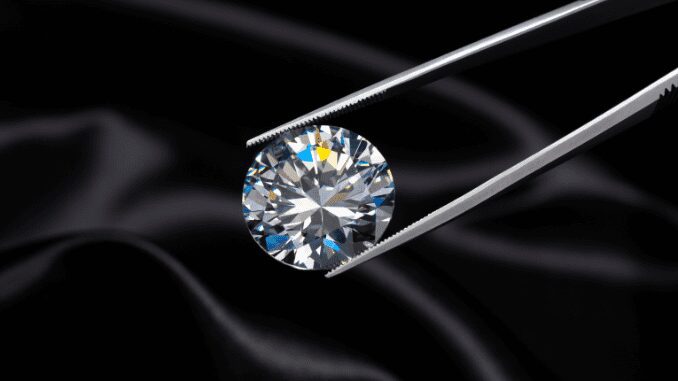
What are lab grown diamonds: Know in one minute
|
Introduction
Diamond has always been considered a staple luxury commodity as it can last forever. There are many emotions attached to the creative process of a fine diamond that has been loved today. But the recent invention of lab-grown diamonds has disrupted the traditional notion of jewellery enthusiasts and paved a new path of technological advancement in the jewellery sector. In this article, we are going to talk in detail about what are lab grown diamonds and how convincing and credible they are compared to natural diamonds.
Birth Timeline of Lab grown diamonds
- Despite the common belief that lab-grown diamond technology is a recent development, its history actually extends over a century.
- Since the discovery of diamond’s chemical composition by Antoine Lavoisier in 1772, many chemists and prominent corporations have made failed attempts to create artificial diamonds by heating charcoal. The difficulty lies in achieving the proper conditions for diamond crystallisation, which requires high temperatures and pressures.
- The history of lab-grown diamonds traces back to the 1950s when William G. Eversole, an inventor, created the very first Chemical Vapour Deposition (CVD) lab-grown diamond on a small scale while working for Union Carbide Corporation.
- Within a year, the Swedish company General Swedish Electrical Limited Company developed the first High-Pressure High Temperature (HPHT) lab-grown diamond.
- The lab-grown diamond industry got recognition after General Electric (GE), an American group, produced its own HPHT lab-grown diamond in 1954.
- In the 2000s, American companies such as Gemesis, Appolo and Chatham took advantage of technological advancements to refine recipes, reduce production costs and greatly improve the quality and size of the synthetic diamonds produced.
The Making of Lab grown Diamond
The initial growth method for lab-grown diamonds is accomplished through High-Pressure High Temperature (HPHT) technology.
- This technique replicates the natural process that occurs in the earth’s crust when diamonds are created deep within the mantle.
- The diamond seed base, whether natural or synthetic, is subjected to high pressure from all directions within the combustion chamber.
- The chamber must endure this immense pressure and be heated to a temperature of 1300 – 1600 °C, at which point mineral powder is added to form the diamonds on the base. This is the most widely used process and can generate large lab-grown diamonds with exceptional clarity.
The second technique for producing lab-grown diamonds is called Chemical Vapour Deposition (CVD).
- In this method, a primary gas such as methane is used to create a high-temperature plasma ranging from 700 to 1000 °C.
- Unlike the HPHT method, the CVD method requires a lower pressure capsule, typically ranging from 2500 pa to 26000 pa.
- It demands advanced technology to control and disperse a beam of 2.45 GHz microwave radiation.
- A coating gradually forms on the diamond seed surface, creating layers of diamond thickness.
- The CVD process is highly sophisticated and challenging to calibrate, but it can produce diamonds of exceptional quality.
Credibility and Certifications

In 2018, the definition of a diamond changed by removing the term “natural” from its description. As per the FTC (Federal Trade Commission). A diamond is now defined as “a mineral consisting primarily of pure carbon crystallised in the isometric system, thus including both lab-grown and mined diamonds.
The physical characteristics of a diamond, whether it is naturally mined or created in a laboratory, are indistinguishable. It exhibits the same level of hardness as it ranks first on the Mohs Scale (scale of mineral hardness) with a score of 10/10.
Identifying the origin of a diamond can be challenging even for experts with trained eyes. However, gemmologists have several tools and tests at their disposal to provide clues for stone identification, including the Magnetism test, Infrared Spectroscopy test, and Electrical conductivity measurement test.
Due to the high value and potential for counterfeiting, certification by a reputable gemological institute is essential to ensure accurate stone identification.
- The most popular certification bodies include the Gemmological Institute of America (GIA), the French Laboratory of Gemmology (LFG), and the Belgium HRD Antwerp.
- Since October 2020, GIA even offers a fully digital option to access diamond certificates through a smartphone app for added convenience.
- However, guaranteeing the authenticity of a stone can be expensive, and thus, typically reserved for exceptional stones.
The sustainable and conscious luxury

-
Less price
The reduced price of lab-grown diamonds is because of their shorter supply chain.
Mined diamonds go through a complex and lengthy process involving various industries and companies before reaching a jewellery store. In contrast, lab-grown diamonds eliminate the need for such a long supply chain, resulting in lower costs for middlemen.
-
Social responsibility
Present-day millennials and Gen Z shows a keen interest in buying ethically made diamonds over traditional ones which involve ecological destruction, violations of human rights, and unethical processing.
-
Environmental impact
They have a lower water absorption rate and consume less energy compared to mined diamonds. Mined diamonds consume 538.5 million joules per carat, while grown diamonds consume 250 million joules per carat.
According to a study by Clean Origin. Mined diamonds absorb over 126 gallons of water per carat and contribute to the continuous discharge of wastewater and pollutants, while lab-grown diamonds only absorb 18 gallons of water per carat.
-
Human Rights violation and social injustice
Diamond mining is a dangerous job, and it is associated with human rights violations, forced labour, and cruel treatment of workers. Additionally, mined diamonds are sometimes used as illegal currency to fund war and conflict-related activities in various African countries.
Q&A
1. What is a lab-grown diamond?
Also known as synthetic or cultured diamond, is created in a laboratory under high temperature and pressure and has exactly the same physical and chemical properties as natural diamonds.
2. Are lab-grown diamonds real?
Yes, they are real diamonds just that they are prepared in the lab by mimicking the physical and chemical condition of the earth’s crust.
3. Lab-grown diamonds vs real?
Lab-grown diamonds are real diamonds. They are natural diamonds and are exactly the same
The only difference lies in the notion that Lab-grown Diamonds have their origin in the laboratory while, Natural Diamonds are Mined from the earth.
4. Are lab-grown diamonds valuable?
They have lower resale value than naturally mined diamonds due to their easier accessibility and lower production costs. However, they still have value and can be a more affordable option for those seeking a diamond.
5. What is the downside of lab-grown diamonds?
They may not retain their value like natural diamonds and may be perceived as less unique since they are not formed naturally. Another concern is that the market could become saturated with lab-grown diamonds, causing prices to decrease for all types of diamonds.
6. Can jewellers tell lab diamonds?
Trained jewellers can usually identify by using specialised tools and techniques such as the Magnetism test, Infrared Spectroscopy test, and Electrical conductivity measurement test. Without these tools, it can be challenging to distinguish between them.
Written By: Deva Singh
References
- Bagathi, A. K., Balagtas, C., Boppana, S. V. K., Coste-Manière, I., Vincent, F., Troquer, F. L., & Boyer, G. (2021). Lab-Grown Diamond–The Shape of Tomorrow’s Jewelry. In Springer eBooks (pp. 229–253).
- Sally, E. M., & Troy, A. (2021). Laboratory-grown diamond: A gemological laboratory perspective. Journal of Gems & Gemmology, 23(6), 25-39.
- Lanigan, P. M., & McGuinness, C. D. (2021). Laboratory-grown Diamonds: Information Guide to HPHT-grown and CVD-grown Diamonds. The Journal of Gemmology, 37(5), 547-548.
